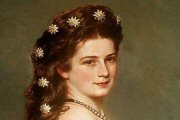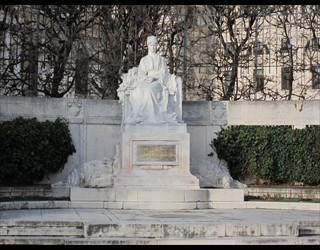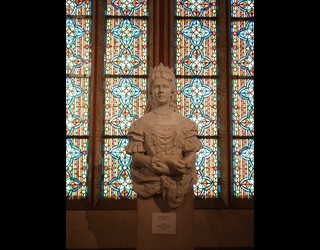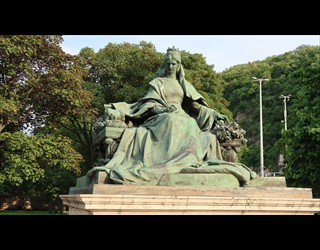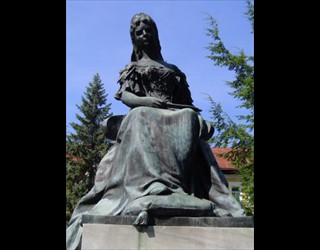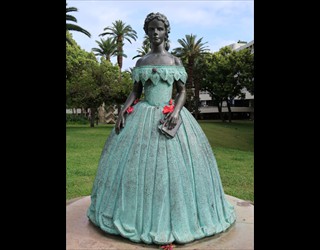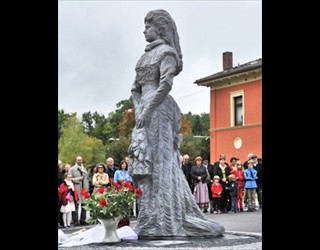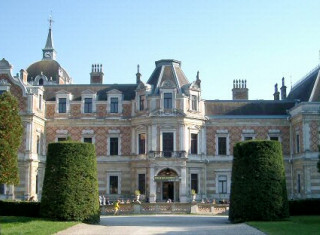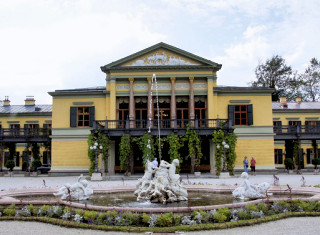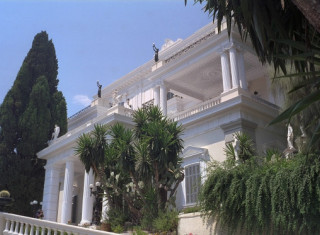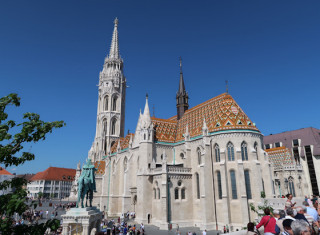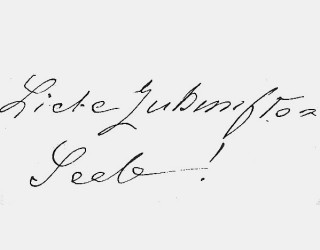Elisabeth of Austria
She was born Elisabeth Amalie Eugenie von Wittelsbach, Duchess of Bavaria in Munich on 24 December 1837. In 1854, she became Empress of Austria through her marriage to her cousin Franz Joseph I and Queen of Hungary in 1867. We know her under the name "Sisi".
Sisi is best known to us from the Sisi films, in which she is portrayed as an enchanting young girl. In reality, she was a shy, selfish and unrealistic person. She hid behind fans and parasols and just wanted to be left alone. She was a passionate reader of Heinrich Heine's poetry and wrote poems in the style of Heine herself.
The empress gave birth to a total of four children: Sophie Friederike (*1855), who died at the age of two, Gisela (1856-1932), Rudolf Franz Karl Joseph (*1858), who committed suicide with his lover Mary Vetsera at Mayerling Castle in 1889, and Marie Valerie Mathilde Amalie (1868-1924).
Sisi's enthusiasm for courtly life left much to be desired. She spent most of her time travelling, sometimes for several years at a time. She explored the world and repeatedly took health cures due to health problems. Franz Josef built her the Hermes Villa in the Lainzer Tiergarten in Vienna to keep her close to him, but to give her the freedom she sought away from the court ceremonial and seclusion from the public eye. The villa was furnished entirely according to her romantic ideas. She was also unable to keep the Hermes Villa and travelled restlessly all over Europe.
While Sisi tended to keep a low profile politically, she vehemently supported Hungary. Sisi was also instrumental in Hungary regaining its
constitution of 1848. In 1867, she and Franz were appointed Queen and King of Hungary. She even learnt Hungarian and spent a lot of time at Gödöllő Castle.
Sisi was conscious of her good looks and invested a lot of time in the beauty cult of the time. She attached great importance to naturalness and was proud of her thick hair.
However, she was also considered anorexic at times, ate very little and, at 1.72 metres tall, never weighed more than 50 kg. To keep her weight constant, she was even weighed
three times a day.
On 10 September 1898, the Empress died in an assassination attempt in Geneva at the age of 61. The anarchist Luigi Lucheni pounced on the empress and stabbed her directly in the heart with a file. She was buried in the Capuchin Crypt in Vienna on 17 September. Her sarcophagus still stands today next to those of her husband Emperor Franz Joseph and her son Rudolf. Even today, there are always fresh flowers on her coffin.
Sisi:
Wie war ich einst so jung und reich an Lebenslust und Hoffen. Ich wähnte nichts an Kraft mir gleich. Die Welt stand mir noch offen. Ich hab geliebt, ich hab gelebt, ich hab die Welt durchzogen; Doch nie erreicht, was ich erstrebt. Ich hab und ward betrogen!
How I was once so young and rich in lust for life and hope. I thought I had no equal in strength. The world was still open to me. I loved, I lived, I travelled the world; But never achieved what I aspired to. I have and have been deceived!
More Sisi pages: See selection menu
